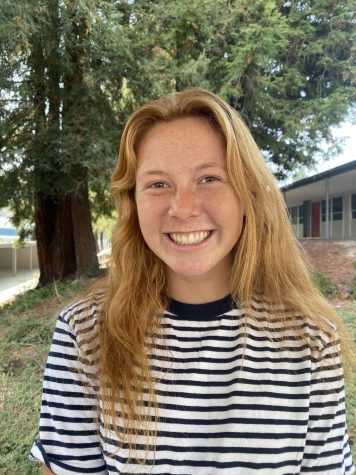Temple Trip Examines Civil Rights History
January 22, 2020
For 5 days, juniors and seniors from Temple Isaiah in Lafayette visited Alabama and Georgia in order to learn about Martin Luther King Jr.’s legacy, including his fight for civil rights, while also examining Jewish life in the South.
Out of the 28 students who attended, 7 were from Campolindo. Others hailed from various high schools in the East Bay.
The trip provided a tangible experience with history for junior Emerson Hogan, who said that she “gained a perspective on what really occurred in the South rather than just learning it from a textbook.” Hogan added that it was “really eye-opening.”
Senior Jake Myers said that, as he had never been to Alabama or Georgia before, he “got to see how people lived their lives,” which differed from those lived on the West Coast.
Junior Carmen Horenstein and Hogan agreed that the Legacy Museum in Alabama was particularly impactful as it told the story of African Americans in America, from slavery to the civil rights movement to mass incarceration.
Myers felt the greatest connection with the 16th Street Baptist Church as it “was the site in which 4 young girls got their lives taken.” She said this particular experience was most real, and gave her a unique understanding of the experiences of African Americans during the 1960’s.
The students also visited Kelly Ingram Park (which has sculptures that depict the challenges of the civil rights movement), the Edmund Pettus Bridge (where the 1965 Bloody Sunday event, in which civil rights demonstrators were brutally beaten by police officers, occurred), and Martin Luther King Jr.’s childhood home, along with other notable museums and locations.
Horenstein added that it was hard to hear about the imprisonment and treatment of children who participated in the protests as the group met Joanne Bland, an activist who was brought to prison camps 13 times from the ages of 8 to 11.
“A lot of people think that racism and civil rights movements are finished and everyone is equal but in fact, there’s still a lot of issues with racism and mass incarceration,” said Horenstein. “I think it’s important to share about all the important things that [civil rights leaders] have done in all the movements and [that we] continue to fight against injustice that we see in our world and fight against small racism that we see in our life and stand up when we hear discrimination.”
Hogan added that the trip served as a reminder that all citizens must take action to fight against injustice.
In addition to the learning experience, “creating bonds with other people in the Jewish community” was the best part of the trip for Myers.
